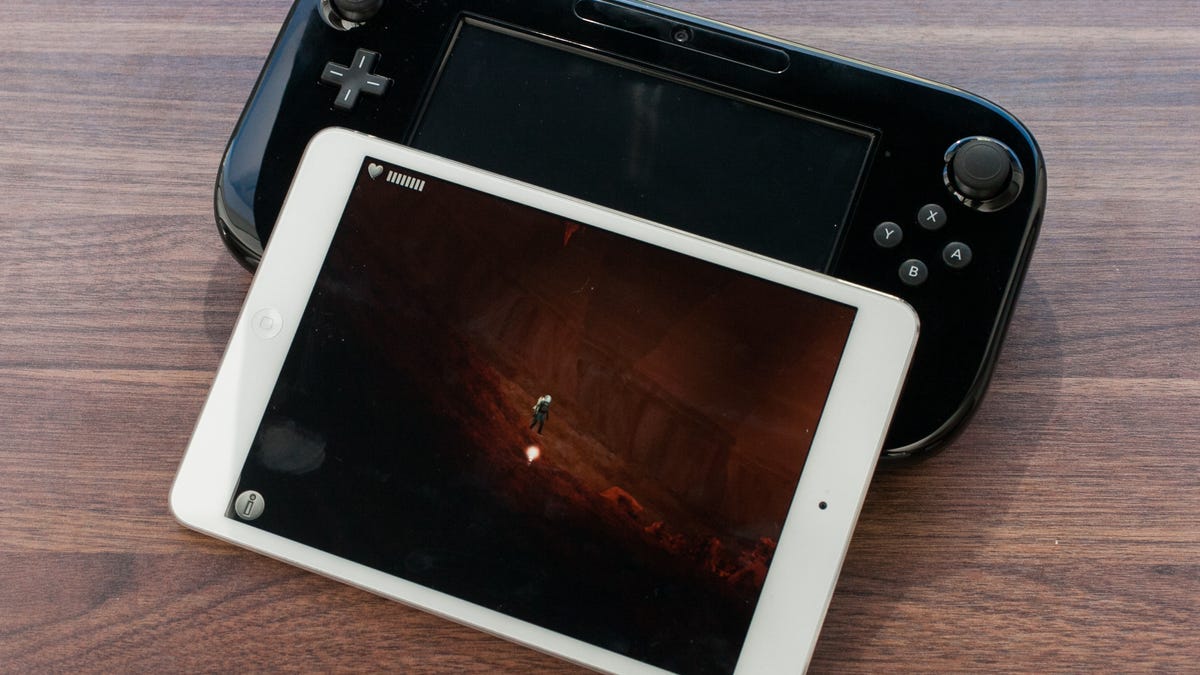Why the next Nintendo portable needs to be a tablet
Somewhere between the Wii U and the iPad lies where Nintendo's next product needs to be.

The Nintendo Wii U comes out in just a few days, just in time for Thanksgiving-time shopping. Look at its signature feature: the GamePad. It has a 6-inch touch screen. It has a gyroscope. It has buttons. It's more than a little like a supertablet.
But it's not. I've tried using the Wii U. Nintendo's upcoming console is clearly a nod toward the fusion of handheld tablets with TV set-top boxes, a second-screen device if ever there was one. It can play games on its little screen even when the TV that the Wii U is plugged into is turned off or doing something else. And it can even move to another room and be used wirelessly. It's not a tablet, however. A lot of people will wish it were. And that's exactly where Nintendo needs to eventually head.
The Wii U GamePad may even seem like more of an expanded game handheld than a tablet, a super-large-screen Nintendo DS without the dual screens, but it's an in-home accessory with the need to pair to a Wii U console in order to operate. You can use it in another room, but not in a car or somewhere out of the Wii U's wireless range. The Wii U with GamePad costs $299, although the configuration you'll probably want to buy costs $349.
And now, consider the iPad Mini.
The iPad Mini starts at $329. It debuted a couple of weeks ago. It has a 7.9-inch screen. It can play games, play movies, play apps, surf the Web, check e-mail. And it doesn't need to pair with a console.
These are totally different devices. But they'll inevitably be compared with each other. Why? Because they're both new products for the holiday season, they both cost nearly the same, and they're both squarely targeted at children and families.
Nintendo already has a gaming handheld on the market -- two, in fact. But neither the Nintendo 3DS nor the Nintendo DS/DSi can really interface with the Wii U in any meaningful way. They're separate platforms.
The Wii U GamePad is a fun gadget, if a bulky one. My 4-year-old son put it best: "Daddy played a Mario game and put it on his iPad." That's exactly what the initial experience feels like, and while the GamePad needs frequent recharging and can't operate on its own, you can't help but wonder: what if it could? What would it do? The GamePad feels like a spiritual successor to the DS: it has the same stylus, and a similar-feeling button layout. It's an evolutionary hybrid of the DS and Wii.
Nintendo's rebooted the way users log in and download content on the Wii U, and while that new online interface isn't live yet, the 12 different user IDs that can be assigned to a single Wii U suggests, to me, whether these IDs could be applied to other devices. And if there were another such Nintendo device, that would be a tablet.
A tablet could be a second home Wii U controller. It could be an on-ramp to getting customers into the Nintendo ecosystem without buying a Wii U at all. And, it could be a way of staving off the inevitable pressure from tablet manufacturers: Apple, as well as Google, Microsoft, and all their hardware partners.
Educational possibilities are endless. Nintendo could make software, like Brain Age, tuned specifically to educational entertainment. A full-fledged tablet could leapfrog devices like the LeapFrog, if the correct educational investments were made.
The Wii U has a lot of great ideas to add to the discussion of how tablets can work with TVs, but the next step needs to be to find a way to unpair the GamePad and have it be a device on its own. It needs to have Nintendo's classic game library on tap, ready to go. If that doesn't happen, consider the alternative: Nintendo has a near-tablet and two handhelds all existing in parallel. I'd rather have one connected ecosystem instead, and I think many people would agree.
The gaming and entertainment landscape has changed a lot since 2006, and Nintendo doesn't own the casual gaming space anymore. But it needs to protect its turf. And merging portable and home gaming/entertainment into one connected universe is the only way to go.

